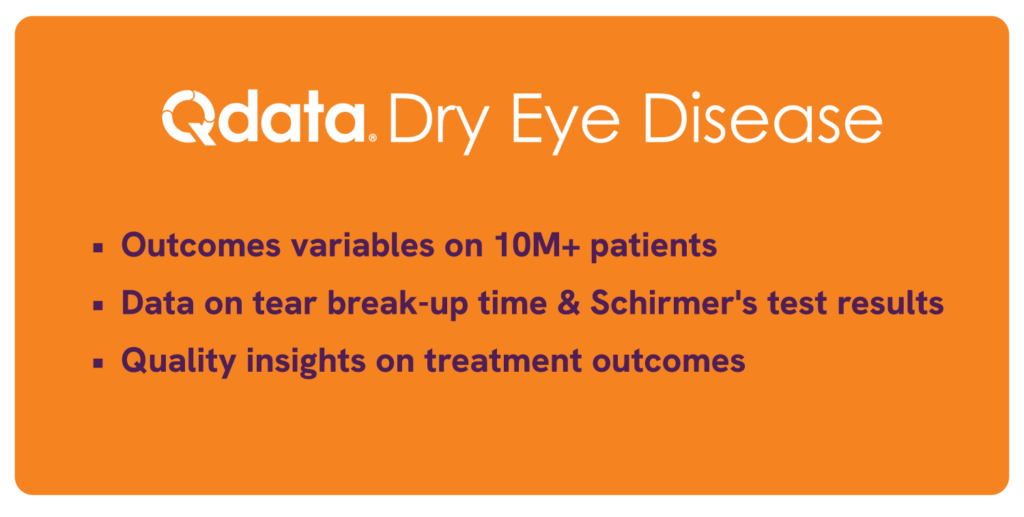Largest Real-World Dataset of its Kind to Help Advance Treatments for Dry Eye Disease
Author:
Verana Health
Dry eye disease (DED) has become increasingly common in today’s digital age, where people are spending more and more time on cell phones, and in front of computer screens. It’s estimated that dry eye disease affects nearly 16 million Americans, posing significant challenges for patients and ophthalmologists. If left untreated, some forms of DED can lead to severe complications, including corneal damage, hence the urgent need for advancements in research and treatment.
Verana Health is currently developing Qdata® Dry Eye Disease, the largest dataset of its kind, with real-world data (RWD) on more than 10 million patients that can help advance research and accelerate therapy development for DED and other ocular surface disorders. Qdata DED represents a significant advancement in ophthalmology research, featuring important data on patient outcomes and clinical information.
The module will include extensive data on tests (e.g., tear break-up time and Schirmer’s) beyond what can be gleaned from codes alone. Tear break-up time (TBUT) is a clinical test used to assess for evaporative dry eye disease. A Schirmer’s test determines whether the eye produces enough tears to keep it moist. Both tests can help classify DED patients (e.g., evaporative or aqueous deficient) and can be extracted from clinical notes within electronic health records (EHRs). For example, when documenting TBUT in the notes sections of EHRs, clinicians may enter “tear break-up,” “tear field break up,” “TBUT,” or “TFBUT.” Likewise for the Schirmer’s test. Descriptors may include “Schirmer’s test,” “Schirmer,” or “STT.” Such descriptors are examples of how these Qdata DED key variables are created and are essential in providing further insights on treatment outcomes in the real world.

Derived from the American Academy of Ophthalmology IRIS® Registry (Intelligent Research in Sight), this data facilitates a deeper understanding of DED and other ocular surface conditions to assist with clinical development, Health Economics and Outcomes Research (HEOR), medical affairs, and commercialization teams.
By harnessing the power of real-world evidence, Qdata DED can help transform patient care and expedite the development of crucial therapies
By harnessing the power of real-world evidence, Qdata DED can help transform patient care and expedite the development of crucial therapies. The module will provide life sciences companies with access to a rich, expansive dataset that sheds light on many aspects of DED. Teams across the drug development lifecycle will be able to deepen their understanding of patient outcomes, compare how cohorts of patients respond to various therapies, and better stratify patients with ocular surface disorders.
RWD is instrumental in advancing quality of care and improving the quality of life for patients. Verana Health remains at the forefront of this transformation and is continuously expanding its Qdata offerings to assist life sciences teams in advancing research and clinicians in advancing patient care. To learn more about our Qdata offerings in ophthalmology, click here.

Let's Accelerate Research Together
To learn more about Verana Health, please fill out the information below and our team will follow up with you as soon as possible.

